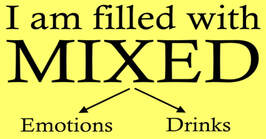 This is a difficult post to write, but the time is right. I'm retiring from client-based fishing activities. I've reached the age where it's becoming more and more difficult to recover from the daily grind of hiking trails, slipping on river rocks, sliding on muddy inclines, and fighting the lateral pressure of the river against knees that aren't what they used to be. I've also recently discovered that I have arthritis in my right shoulder (aka my "casting shoulder"). This career of mine has been an amazing journey, and I wouldn't trade the experience for anything, but it's put a lot of miles on me, and it's time to step aside. NOTE: If you're already on the calendar for a trip or lesson, we're still on. Unfortunately, this retirement will include my Alaska trips. Without guiding, it makes no sense to continue carrying business liability insurance, and without that insurance, I won't be able obtain the necessary licenses and permits to guide clients in the Tongass National Forest on Prince of Wales Island. The 2019 trip coming up next month will be the last one. Missouri Trout Hunter will not go away. This website will continue, and I'll continue to be involved in the Ozarks trout fishing community. I'll continue to write, and I'll continue to post videos via YouTube as I have time. The website will change, though... slowly. But it will become more dynamic. There will be more reasons to come back for a visit from time to time. And I'll continue to be active on Facebook, Instagram, and Twitter (although I have to admit, I'm not much of a Twitter guy). To all of you who have made it possible for me to have this dream of a career, you have my thanks. Walt
1 Comment
If you are among my past fly fishing students, then you're likely familiar with my "ninja fly fishing technique." There's really nothing about it that is "ninja," other than the fact that I like calling it that. It's also not earth-shattering in its content. Essentially, I'm just trying to hit a variety of techniques on every cast, and it's a great way for a beginner to get into some fish. Here's how it works: (1) cast a nymph under an indicator upstream; (2) mend your line, raise your rod tip, and/or pick up slack with your line hand to maintain a clean dead drift; (3) at the end of the drift, allow the fly to swing across the current; (4) allow the fly to hang in the current for a moment or two; (5) strip the fly back toward you for 2 or 3 feet; (6) if needed, take one quiet step upstream; (7) water-load your cast back upstream. Lather, rinse, repeat. Using "the ninja technique" With this technique, you're nymphing, swinging a wet fly, and also throwing in a touch of streamer fishing. If you don't get a hit on the drift, you'll often get a hit as the fly first begins its acceleration around the swing or after you reach the hanging-in-the-current part of the presentation. The weakness of the ninja technique is that you don't get a bunch of hits DURING the swing itself. While using the ninja technique, if I'm mostly getting downstream hits rather than dead-drift hits, I'll usually try a pure swing presentation for a while. If they're receptive, then I'm telling you, the swing's the thing. First, I'm going to tell you why. Then I'm going to tell you how.
Imagine you're a trout hanging out in a crystal clear stream. As little bits of stuff drift by, you give it a glance. If it looks like food, you eat it. Pretty simple, right? Now imagine that the rains come, and now there are tons of little bits of things drifting by, and most of it is not food. The debris includes specks of dead leaves, bits of algae that have broken free from the stream bed, seed pods blown free from streamside vegetation, and so on. How easy is it for you to look at everything to figure out what's food and what's not? Seeing the issue? There's so much static, it's darn near impossible to feed efficiently. Now add to that the possibility of a faster current and murkier water. How does a trout adapt to this scenario? Simple. Since the debris and a typical drifting bug are too similar to quickly tell apart, a trout has to change the parameters of what he's looking for. If you're a hardcore nymph fisherman, you might have decent luck by simply switching flies to something that is easier to pick out of the static -- a huge black nymph tied with flash and rubber legs, for example. But if the trout has stopped looking at drifting food altogether, this won't help you. At some point, the trout will instead look for food-sized items that are moving differently than the inedible debris. Any movement at all will snap that fly out of the background static. This should bring to mind a couple of options. One would be to twitch that nymph on the drift. That could work. Twitches can also startle the fish. Give it a try anyway. See what you think. Another idea would be to strip a streamer. If they're not looking for bugs, maybe they'll grab a minnow or crayfish. Possibly! Could be fun. Give it a shot. The third option is to switch your technique to a wet-fly style swing. Again, imagine you're that trout, and the debris and current have picked up the pace. You're trying to find something to eat, but the volume to debris drifting straight at your face is making it impossible. But what if you saw some movement out of the corner of your eye? You glance over and see something that looks buggy moving from the streambed on your left toward the surface on your right. It sticks out like a sore thumb. You know it's not debris. It looks edible, and it's moving in a predictable path. You'd eat it, right? Of course, you would. That's the beauty of the swing. The reason you won't get many hits during the swing when you're using my ninja technique is because there's too much of a bend in the line at the end of the drift. Our primary focus is the dead drift of the nymph, so we throw the fly upstream with a mend. When the fly reaches the end of the drift and swings across, the bend in the line forces the fly to accelerate downstream very quickly, and then it whip-cracks around that bend. This movement is just too sudden to interest a fish. You'll need to focus your efforts on developing a more gentle and predictable swing. Instead of wading and casting upstream, turn around. You'll be moving downstream and casting across the current at a downstream angle instead. Finish your cast with your rod held high, so you can drop the rod tip and give the fly some slack. If you're using enough weight -- and if you've never done this before, it's a safe bet you won't be -- as you slowly drop your rod tip, the fly will sink. This is a balancing act. You don't want any tension between the rod and the fly because tension pulls the fly up. You also don't want any real slack, because you want to maintain some level of physical contact with the fly. As the fly sinks, slowly lead it across the current with your rod tip. It's important to understand that I'm not suggesting you PULL it across the current. Throughout the drift, your challenge is to maintain that no-drag-no-slack thing. Early in the swing, a bite will look and feel like you've snagged a flexible tree limb. If you see that, just give it a touch of tension toward your side of the river to see if it pulls back. Later in the swing, a bite will feel like a bite. The trout will approach from behind, grab the fly and turn away with it. You'll feel that thump or tension, and there will be no doubt. Any fly will work, but flies that incorporate components that move or appear to move seem to work best. Flimsy hackle, marabou, CDC, rubber legs, or flies tied with flash all fall into this category. If the water is off-color, darker colors will give it starker contrast and make it easier to see. Woolly buggers, emergers, soft hackles, big nymphs with legs and marabou tails... you get the idea. Get creative. Last thought: the next time you're fishing dries during a hatch and not getting any action, try this technique with an emerger. And you're welcome! The Fishing's Been Pretty Darn Good!Disclaimer: this is the River Update Email from January, but it's being posted to the blog now in May. It will be valid information for most Januarys (Januaries?), but if you'd like to get information like this when it's more timely, shoot me an email to subscribe to the River Update Email. There's often something special about trout fishing in Missouri in January. For one thing, there always seems to be a nice patch of weather when the sun comes out, the wind dies down, and everything that was frozen thaws. That's also a cue for the rivers to suddenly get a bit crowded as we fishermen look for an excuse to shake off the cabin fever. Typically, you'll see some fishermen doing great and others struggling to get a bite. We don't have successful wild brown trout spawning in Missouri, but they still go through the motions. Almost immediately after that activity, our wild rainbows start in. Now that all that's over, both our browns and rainbows should start sagging back downstream. Also, you'll find the trout in the process of re-establishing pools and channels as home base instead of the shoals and riffles they like during spawning time. So, in other words, we're in a transitional period right now, and that simplifies things. You'll find fish in pretty much every type of water, so if you decide to walk past water to get to a spot, you'll probably spook fish out of that section you're ignoring. The fish aren't usually crowded together, but they are everywhere. You should also find good numbers of fish scattered from the headwaters downstream for at least a few miles, as they do their post-spawn downstream drift. These are good things. (continued below the Alaska video) WATCH THIS VIDEO. There's only room for 2 more to join the August 13-19 week on Prince of Wales, Alaska THIS SUMMER. And the price has been reduced to $1700 per person! For more information, click HERE.Regarding the bite, those of you who have followed along probably already know my philosophy on trout feeding behavior. We hope they're feeding aggressively (feeding behavior #1), because that means they'll chase your fly or lure and kill it. It's tons of fun, but the conditions have to be right for that to happen. If you're not seeing that behavior, we hope they're feeding opportunistically (feeding behavior #2), because that means they'll taste anything that looks like food. Drifting big goofy rubber-legged things or glo-bugs work great during times like this. Feeding behavior #3 is what I call "passive feeding," and this is most of what we're seeing right now. A passively feeding trout is still feeding, but they're generally feeding only on stuff they already recognize as food. This style of feeding calls for bringing out your flies that actually match real insects. The fourth and more irritating style of feeding is "selective." That typically occurs when there's a hatch going on, and the fish are seeing thousands of identical bits of food drifting in the current. Essentially, they zone out, and everything other than that bug becomes part of the background static. That's when you need the right fly in the right size and color, and you also need to present it properly. Selective feeding can make you lose your religion. Luckily, they're not feeding selectively right now, but there is a little bit of selective feeding "flavor" going on. When a trout is feeding passively (#3), picking at familiar food items, what makes the food appear familiar is that those bugs are active and out and about. Right now the most active bugs tend to be itty bitty -- midges, for example. There are also some scuds swimming about, and most of them are pretty small as well. You don't need to match the hatch, though. Just get down into that #16-20 size range to pick up those passively feeding fish. Last thought: there are also some opportunistically feeding fish out there right now, and that may call for a tandem rig. Lead with the big goofy fly to tempt those fish willing to taste something new, and trail something itty bitty behind it. That's it! If it's not working, it's a technique issue (no offense). 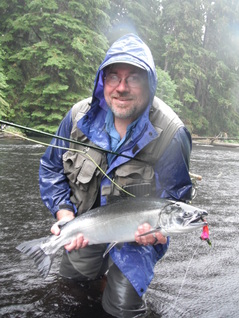 You may or may not already know that I host an annual salmon-fishing trip to >>Alaska's Prince of Wales Island<<. It's a profit center for me, but I keep the margins pretty tight. Essentially, my income comes from charging my guests for a guide trip, and that's pretty much it. Even so, I've received a lot of feedback from people lamenting that they still can't afford to book the trip. If that sounds familiar, this article is for you. Here's how to do it yourself in 5 not-too-terribly difficult steps. Step 1: RESEARCH Obviously, you need to do some research first. Thank God for the internet, right? You need to ask yourself a few questions to home in on your target. Are you salmon fishing? What species of salmon are you wanting to target? Which rivers hold those species? When do those species run? Are you a big river kind of person, or would you prefer a river you can wade for miles? How many people will be in your group? For the sake of simplicity, let's say you've decided you want to fish the Kenai River basin, you'd like to be based near Soldotna, and you'd like to target king and sockeye salmon, which are both typically running in that drainage the last half of July. And let's say there will only be two of you -- you and your best friend fishing buddy. Step 2: LODGING & TRANSPORTATION Unless you're planning to camp, it's time to track down a roof that hopefully doesn't leak. You can always look at >>VRBO.com<< (Vacation Rentals By Owner) to find an independently owned house or cabin for rent. With a bit of creative application of filters, here's what we have to work with. Even though we asked for Soldotna, we actually have listings from the surrounding areas as well, so we have to do a bit of sifting. It wasn't too terribly difficult to find a 5-star rated cabin with decent amenities for $110 per night. Now, this seems REALLY cheap to me, even for a VRBO listing. My guess is that this is not reflecting the accurate charge for two fishermen, but since I can't verify without actually pretending to book it, we'll just go with it. 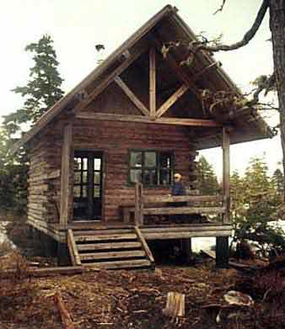 Still too expensive? A cheaper option is to book one of the >>public use cabins<< available through the Forest Service or National Park Service. The charge is $25-50 per night, depending on how nice they are and how hard they are to get to (some require a float plane or a hike plus a rowboat to access). There is one important thing to keep in mind. While you'll typically find a wood burning stove or fireplace, some bunks, and occasionally a rowboat if the cabin is situated on a lake, you won't find electricity... or firewood, for that matter. I'm not sure what the firewood solution is. Bring an ax? Buy wood in town? Regarding electricity, how will you store food? Were you wanting to bring fish home with you? Will you cook on the surface of the wood-burning stove or bring a camp stove? These issues will potentially add expense to your trip, and they'll definitely take time away from fishing. There are a couple of fish processors in the area that can vacuum seal and freeze your fish for the trip home. They'll probably charge you $1.50 a pound plus a fee of around $8-10 per night to store each 50-pound box of fish, so it would be a good idea to plan for an extra couple hundred bucks per person. You're also going to be charged $15-20 for each box. That said, the less spartan $110 cabin has two notable short-comings as well. (1) While it does have electricity and a chest freezer for fish, it doesn't appear the cabin includes a vacuum sealer. If you own a vacuum sealer, you can certainly toss it in your luggage to bring with you, or you can use the same processor you tracked down above. (2) You'll also need to rent a vehicle. Some cabins include a vehicle, but of course they're more expensive. Rental vehicle prices up there appear to be around $500 for the week, after fees and taxes and whatnot. Since your destination is quite popular, familiar name brand car rental companies are available. 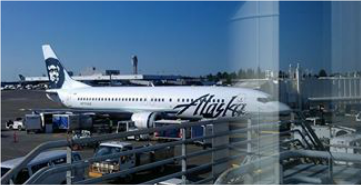 Step 3: TRAVELING TO ALASKA We have our destination set. Now, how do we get there? Flying is the obvious choice, but there's a little trick that you need to take advantage of first. If you have decent credit, you should be able to qualify for the >>Alaska Airlines Signature Visa Card<<. Assuming you do, you'll get a few really nice perks. First, you'll get 30,000 bonus miles right off the bat. Actually, you need to put $1000 on the card in the first 90 days to get them, but just pay your mortgage with the card and call it done. Those miles will probably cut your Alaska Airlines fare about in half, but this varies depending on how far in advance you book. The second perk is the annual companion fare. Once each year, if you buy a round trip ticket at retail, your fishing buddy can get the same ticket for $99 plus taxes (about $121 total). You'll also get a free checked bag for everyone traveling with you on the same charge. Pretty nifty, eh? The mechanics of the trip are pretty simple, too. For this trip, you'll fly to Seattle on >>Alaska Airlines<< and pick up a connecting flight to Anchorage. The earlier you book, the cheaper the flight, of course. I'm writing this on November 11th. When I checked fares today for the third week of July, I found it will run you around $850 + taxes round trip for economy class. If you use your 30,000 bonus miles to cover the to-and-from-Seattle part of the trip, your fare will be more like $350 plus taxes. Once in Anchorage, you have a couple of choices. It's roughly a 140 mile drive to Soldotna, so you can rent your vehicle at the Anchorage airport and take care of it yourself. Or you can take a commuter plane to Kenai for about $325 round trip and rent your car there.
Step 5: DAY TO DAY SURVIVAL Don't forget, you're doing a DIY trip here, and that means no meals, no maids, no hand-holding. Just like when you're home, you are fending for yourself. Day one, track down the grocery store. Assuming you catch and eat a lot of fish during your week, plan on around $100 per person if you keep to a budget. That said, if you go with convenience foods, you're going to kill your budget. A frozen pizza can run you $10-15, so look for the sale items. While you're at the grocery store, grab a couple of fish boxes at about $15-20 each for you and your buddy. Each box will hold 50 pounds of fish, and you'll check them like baggage for the trip home. You'll also want to make sure you know where the gas stations are and when they're open. On this specific trip, you probably won't have a problem with short hours leaving you stranded, but that did happen to me once. I drove to another town to drop off a group for a saltwater charter, figuring I'd gas up there. The only gas station didn't open until noon, and I was on fumes. That was a long boring morning. The owner was probably out fishing. THAT'S IT! Let's sum up by settling on the specifics. Let's assume you're trying to go as cheap as possible, but you'd really like electricity in your cabin, and you're not a fan of chopping firewood on vacation. Let's also assume that you'll filet your own fish but use a local processor to vacuum seal it for you. You'll fly in to Anchorage, rent your car, and drive to the cabin, and you'll use the car to drive to river access points rather than hiring a guide to jet boat it for you. You're using your Alaska Airlines card miles, which gives you a free checked bag both directions, and a $500 discount on your airfare. Here's the tale of the tape. Airfare: $350 plus taxes & fees Your share of the car rental: $250 plus taxes & fees Your share of the gas: $35 Your share of the cabin (6 nights): $330 plus taxes and fees Vacuum sealing and freezing 100 pounds of fish: $150 Fish boxes: $35 Baggage fees to check two 50-pound fish boxes: $50 Groceries: $100 Incidentals (licenses, flies, restaurants, alcohol, etc.): $250 Base rate: $1550 per person + taxes and fees = $1750-ish? Not bad, right? Here's one more thing to think about. A lot of cabin owners will only book in week-long blocks, meaning you'll land on Sunday, check in that afternoon, and depart the following Saturday. That essentially turns your week into 5 days of fishing. If that's the case, you may want to fly in a day early and grab a hotel, so you can hit the ground running bright and early on day one of your adventure. Hotels aren't cheap up north, but you're buying yourself a full day on day 1 with the extra money. Or you can try the 2-step plan... So, this is the cheapest trip I personally was able to put together to Soldotna to fish the Kenai region. It took me a few hours. You can do this too. Of course, I'm HOPING you'll >>book your trip with me instead<<. 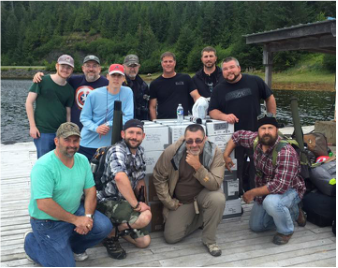 Join the group! Join the group! My trip will take you to Prince of Wales Island, as I mentioned earlier. You get yourself to Ketchikan (instead of Anchorage) and chip in for groceries, and I'll take care of the rest. $2000 includes a float plane trip to the island, lodging, a truck, gas for the truck, a couple of fish boxes, vacuum sealers and freezers on site, flies, a guide trip, lessons if needed, and I'm there with you every step of the way to make sure you're not wasting your time when you should be having a blast instead. And there's a payment plan to make things as financially feasible as possible. Perhaps the best perk is for those of you who can't talk your buddies into a trip like this. Come by yourself and join the group! Instant fishing buddies. >>Click over to the Alaska Trip page and take a look<<. Only a few spots left! Eventually, I'll get around to migrating the articles from the old blog to this location, but I'm sure you understand it's not at the very top of my list of priorities at this point. So, in the meantime, if you're looking for my older posts, click the link below. That said, NEW postings will be located right here.
First chance I get, I'll be migrating all my old blog articles from my blogger account to this location, but I'm sure you understand it's not at the very top of my priorities list right this second. So, in the meantime, follow this link to the old blog location. Thanks!
http://missouritrouthunter.blogspot.com/ I haven't written anything instructional for a while, so I thought I might share my feelings on "picky" trout. This is a little complicated, and I don't want to write a thousand words, so let's see how concise I can be. Trout are not picky. That suggests an intelligence they do not possess. When they are hungry, they are looking for food, and the way they do that is similar to how the FBI tries to find a match for a finger print found at a crime scene. If you've ever had your prints taken, you know how carefully they roll your finger over the ink and then over the paper in order to obtain the perfect print. Prints at a crime scene are never perfect. At best, they're smeared or incomplete. So the computer doesn't look for a perfect match. It looks for points of similarity. If they're casting a wide net to identify suspects, law enforcement may set the standard at just a handful of points of comparison, which doesn't really prove anything in court, or they might set it for 10 or 20 points of comparison. That narrows the results, but it also provides more compelling evidence of a legitimate match.
Trout sometimes only look for a couple of points of comparison between your fly and what their brain recognizes as food (i.e. color and size). Sometimes they look for more similarities. There's an interesting reason why, and it's counter-intuitive. It's not that they're educated. It's because they are as dumb as a bag of doorknobs. A trout's itty bitty brain can really only focus on one or two things at a time. In regards to feeding, that leads to their zoning in on a set of qualities in the food they're actively eating. If there's a hatch going on, and they're feeding on a cloud of Baetis nymphs, they're simply hyper-focused. They may be looking at the size, shape, color, location, depth, and/or behavior. There's really not much else they can look for. That said, during Baetis season, I catch a ton of fish on #14-16 pheasant tails. Not an exact match, but pretty close. It works, because I'm matching the basic points of comparison to the food they're actively feeding on. That's it. If something like a #8 stonefly isn't working in that scenario, it's not because they are refusing it. It's simply that everything else becomes part of the background static. They've keyed in on specific qualities and tuned out on everything else. During these times, they even forget to be nervous about predators, because they can't really focus on more than a couple of things at a time. So, good news, you can walk right up on them if you're careful about it. This behavior carries over to circumstances other than hatches, by the way. If river A has a crap-ton of bugs in it, the trout will become accustomed to the average or typical bug. So if most of the bugs are smallish light colored mayflies of various species, they'll typically look for (1) about the right size, (2) about the right shape, (3) about the right color, and/or (4) about the right behavior, and something like a Hendrickson or Hare's Ear nymph will probably work fine most of the time. I know that seems picky, but it's actually lazy, and what makes it possible for them to be lazy is the fact that there's a "crap-ton" of bugs. They don't have to worry about starvation (in fact, they're almost never actually hungry), so they key in, sit still, and let the river feed them. However, if you move over to River B, you may find the bug population is weaker. This is one of those classic good news/bad news situations. With fewer bugs, river B will have fewer and smaller fish than river A. These fish also tend to be spookier. Since they don't spend as much effort focusing on food identification, they can focus more on safety. That's the bad news. The good news: those fish can't be nearly as lazy as the river A fish. With less food, they must feed more opportunistically, meaning they'll only look for one or two points of comparison on your fly. Sometimes, it just has to be drifting in the water and visible (i.e. glo bugs). Other times, as long as it has the basic shape of a bug and is within reach, you're in business. In rivers like this, the trout are often hungry, and they'll generally go for the largest potential bite of food in the current. They'll also move a greater distance to intercept that food. These also tend to be good rivers for fishing streamers, if the conditions are right. Taking it to the next step, River C may have a terrible forage population, which means the trout there are required to feed aggressively and competitively in order to avoid starvation. And, again, it means you'll find fewer and smaller fish. If you've ever fished a creek where it seemed like those 7-inchers wouldn't leave your fly alone, bouncing your giant dry fly into the air, because their mouths are too small to eat it, you may have stumbled into this type of situation. EDIT: To the best of my knowledge, we don't have trout streams in Missouri that would qualify as a "River C" type of fishery. That's due to our karst topagraphy keeping our water on the alkaline side, which bolsters our bug populations. Trout may not be native here, but our rivers are apparently made for them. To put this knowledge into practice, you just need to learn which type of river you're on: A, B, or C. Are there a million big fish all over the place (i.e. Taneycomo, White River, etc.)? Figure out their primary food sources and try to match them in a mostly general way. The San Juan River, for example, has massive numbers of massive fish, but if you're not prepared to fish #20 midges (or smaller), you're probably going to struggle. It's their primary food, and they can afford to be lazy. You don't have to match a specific bug exactly, but you'll do well to be in the general ballpark. Moderate quantities of fish in a variety of sizes? You'll probably have luck using more generic or attractor flies like pheasant tails, hare's ears, zug bugs, glo-bugs, and san juan worms, mostly in larger sizes. But since these fish tend to be spookier, longer casts, quiet wading, and proper technique are more important. Fishing a creek that seems to only hold below-averaged sized fish in smaller numbers? You'll probably have a great time, but you may have to cover some territory to find them. Just be sure to take your camera, in case you manage to catch that elusive 11-inch trophy. FWIW, 1088 words. :-| See you on the river! |
Head Trout Honcho in ChargeWalt Fulps. RETIRED fly fishing guide and instructor, published author and columnist, and public speakr. My past career life was in the fields of Therapeutic Recreation and Adventure Therapy. Archives
August 2019
Categories |
Pay Me! |
Free Info |
|
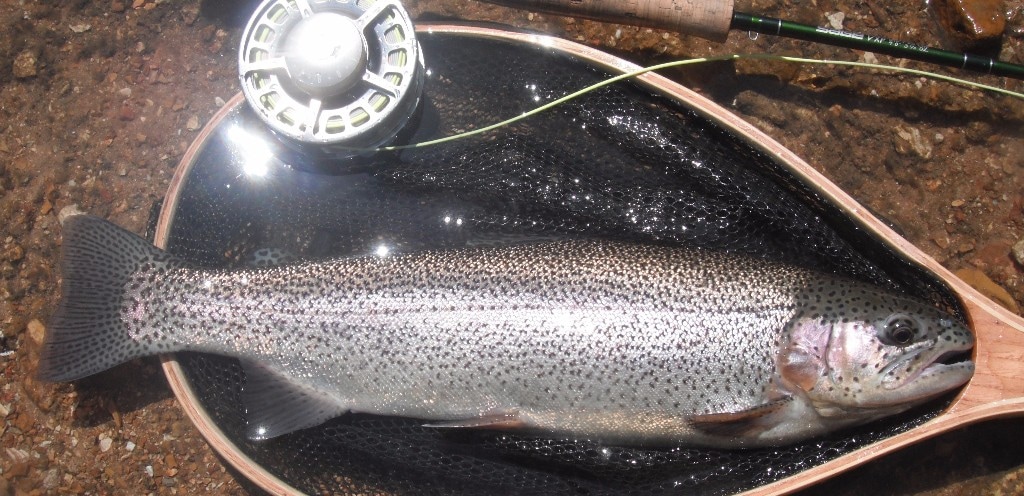
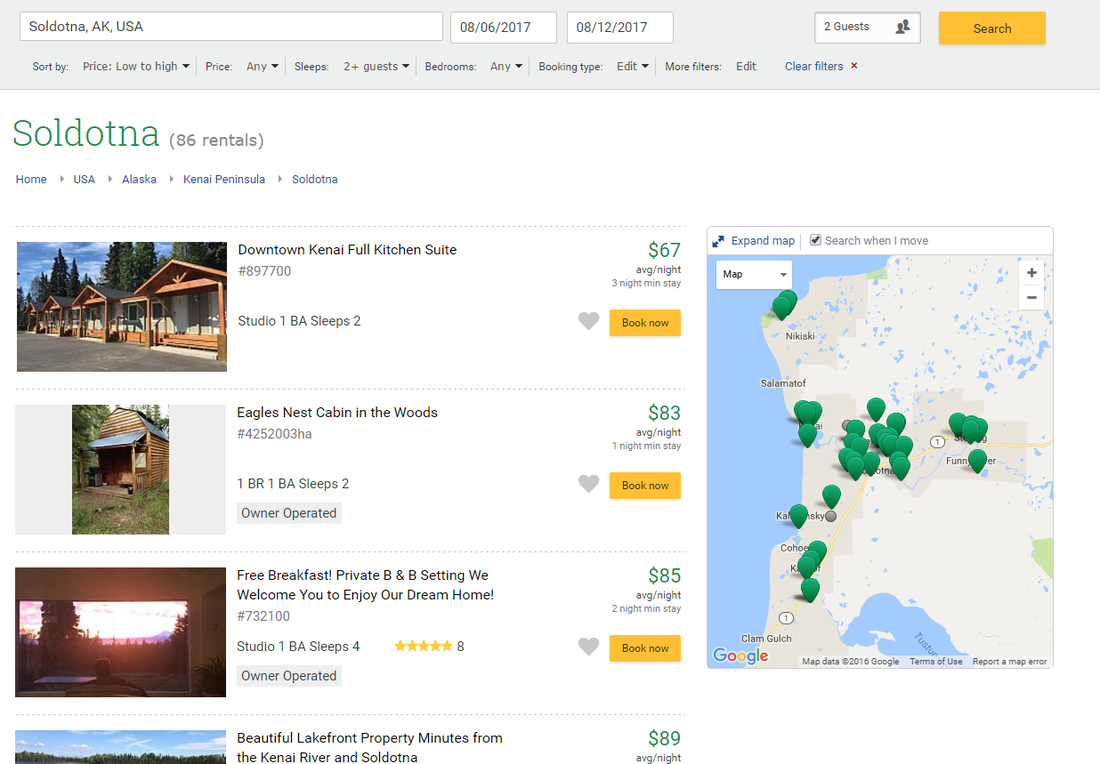
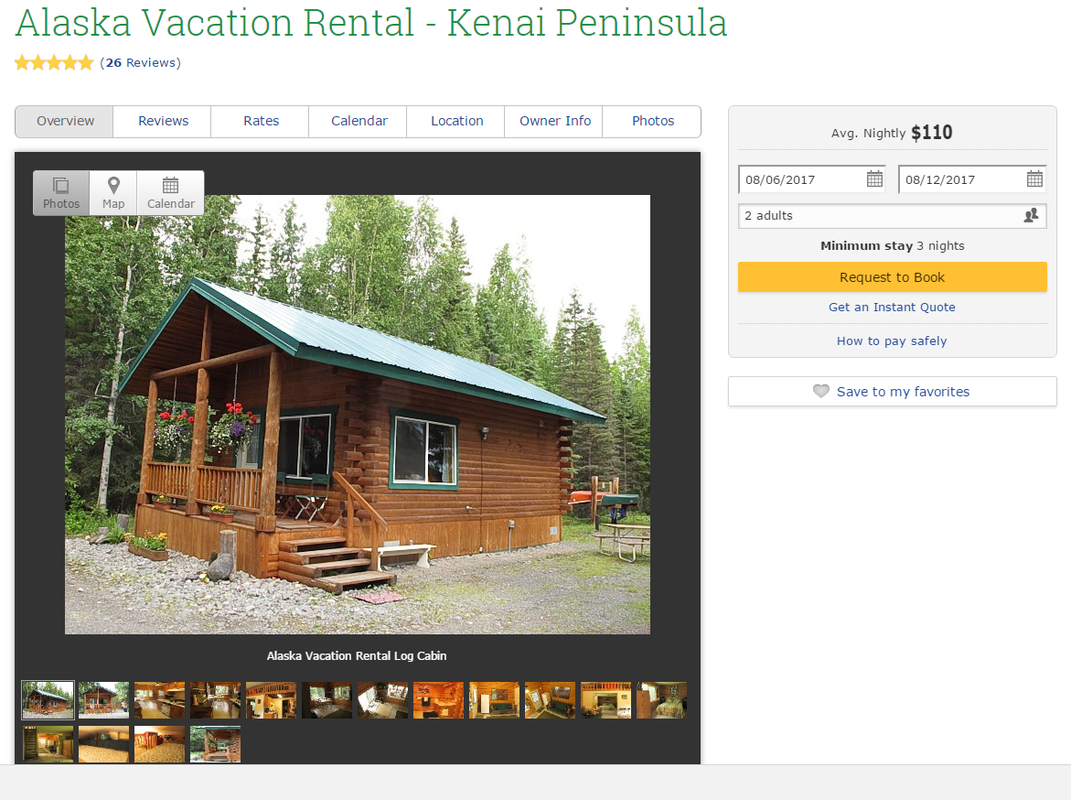
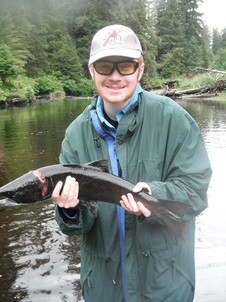
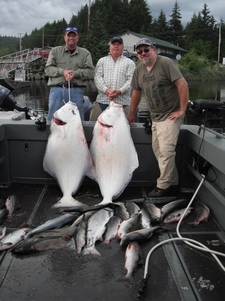
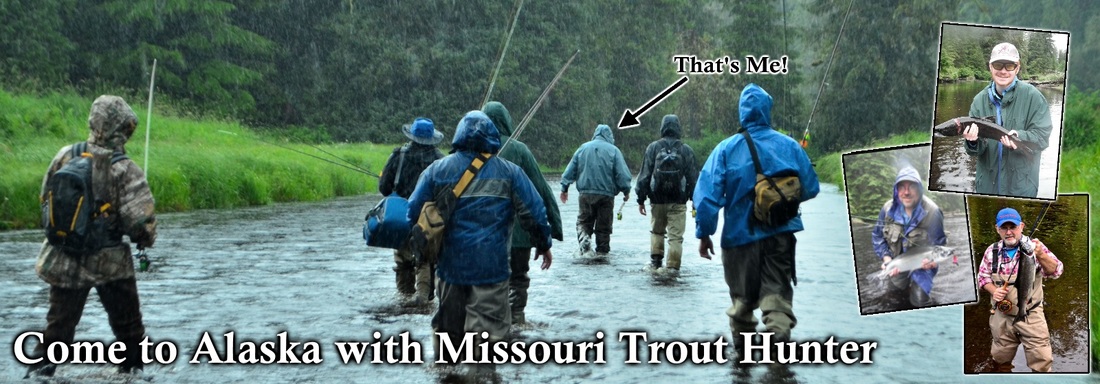


 RSS Feed
RSS Feed